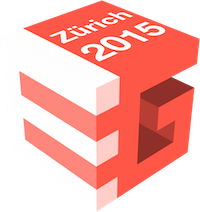Keynote Speakers
Computational Imaging and Display - Hardware-Software Co-design for Imaging Devices
Session Details: Tuesday May 5, 2015 - 16:25 - 17:40 Room: Kongresssaal
Computational Imaging aims to develop new cameras and imaging
modalities that optically encode information about the real world
in such a way that it can be captured by image sensors. The
resulting images represent detailed information such as scene
geometry, motion of solids and liquids, multi-spectral
information, or high contrast (high dynamic range), which can
then be computationally decoded using inverse methods, machine
learning, and numerical optimization. Computational Displays use
a similar approach, but in reverse. Here, the goal is to
computationally encode a target image that is then optically
decoded by the display hardware for presentation to a human
observer. Computational displays are capable of generating
glasses-free 3D displays, high dynamic range imagery, or images
and videos with spatial and/or temporal super-resolution. In
this talk I will give an overview of recent advances and current
challenges in rapidly expanding research area.
Imagineering and Computer Graphics
Session Details: Thursday May 7, 2015 - 16:25 - 17:40 Room: Kongresssaal
Walt Disney Imagineering is responsible for the design and implementation of all Disney theme parks, cruise-lines, and vacation properties around the world. We not only use computer graphics to aid in design, production, and management of our attractions, but also make use of it heavily in the attractions themselves. We utilize technologies from across industries such as architecture, visual effects, automotive, robotics, and training simulations. Come see how Imagineering has utilized computer graphics in the past and what we hope for in the future, as well as how we look at computer graphics through the lens of the human perceptual system.
Design of new materials for health, energy and the environment
Session Details: Friday May 8, 2015 - 10:35 - 11:50 Room: Kongresssaal
Throughout history, the discovery of new materials and the ability to shape them has been the seed for technological innovation. Today, the boundary between structures and materials is blurred, enabling a new way to think about materials’ innovation. Materials can now be engineered not only by manipulating their atomic structure and composition, but also by designing the geometry of their microstructure. Additive manufacturing approaches allow constructing arbitrary shapes with different materials, controlling geometries from the nanometer to the meter scale. These new fabrication technologies have enabled the concept of programmable materials, or materials made-to-order, to fulfill specific needs of applications. By exploiting geometrical effects, like bending and buckling of beams or contact between particles, it is possible to design materials with customized deformation responses, controllable stiffness and multifunctional properties. We have constructed new materials that exploit nano-scale geometries to absorb impacts most effectively, we have 3-D printed acoustic lenses that allow sound to travel as compact bullets that can be used in medical applications, and we are designing new, seismic meta-materials that can protect buildings from earthquakes.
Professor Daraio received her 5 year Laurea degree in Mechanical Engineering from the Universita’ Politecnica delle Marche, Italy (2001). She received her M.S. (2003) and Ph.D. degrees (2006) in Materials Science and Engineering from the University of California, San Diego. She joined the Aeronautics and Applied Physics departments of the California Institute of Technology (Caltech) in fall of 2006 and was promoted full professor in 2010. In January 1st, 2013, she joined the department of Mechanical and Process Engineering at ETH Zürich, with a chair in Mechanics and Materials. She has won several awards. Among these, she received a Presidential Early Career Award (PECASE) from the White House in 2012, was elected as a Sloan Research Fellow in 2011 and received an ONR Young Investigator Award in 2010. She is also a winner of the NSF CAREER award (2009), of the Richard Von Mises Prize (2008) and received recently the Hetenyi Award (2015). She was selected by Popular Science magazine among the “Brilliant 10” (2010). She published over 100 peer-reviewed papers, two book chapters and several patents. For a complete list of publication and research information: http://www.mechmat.ethz.ch.
